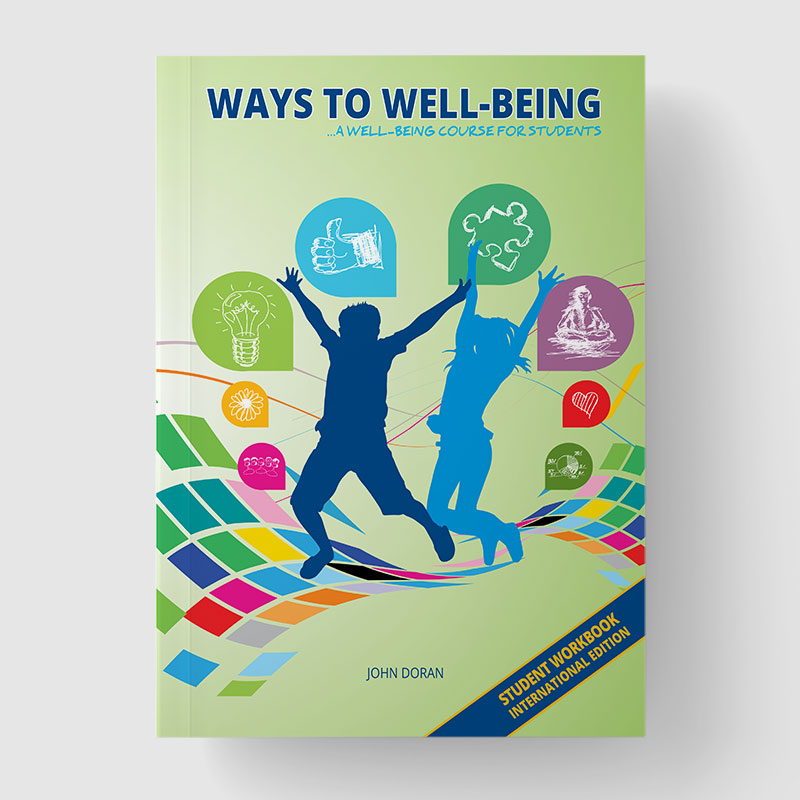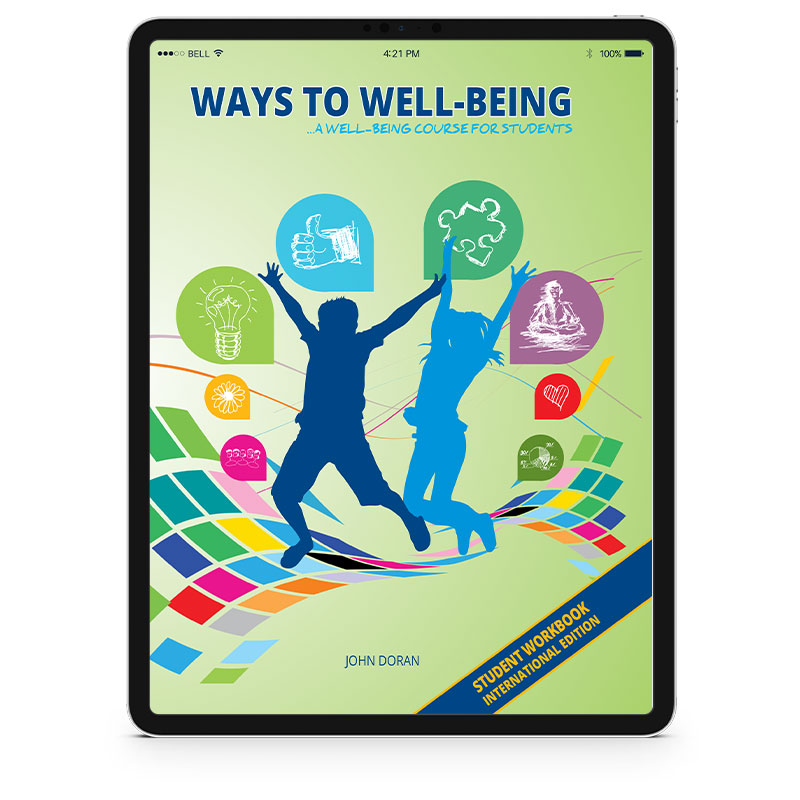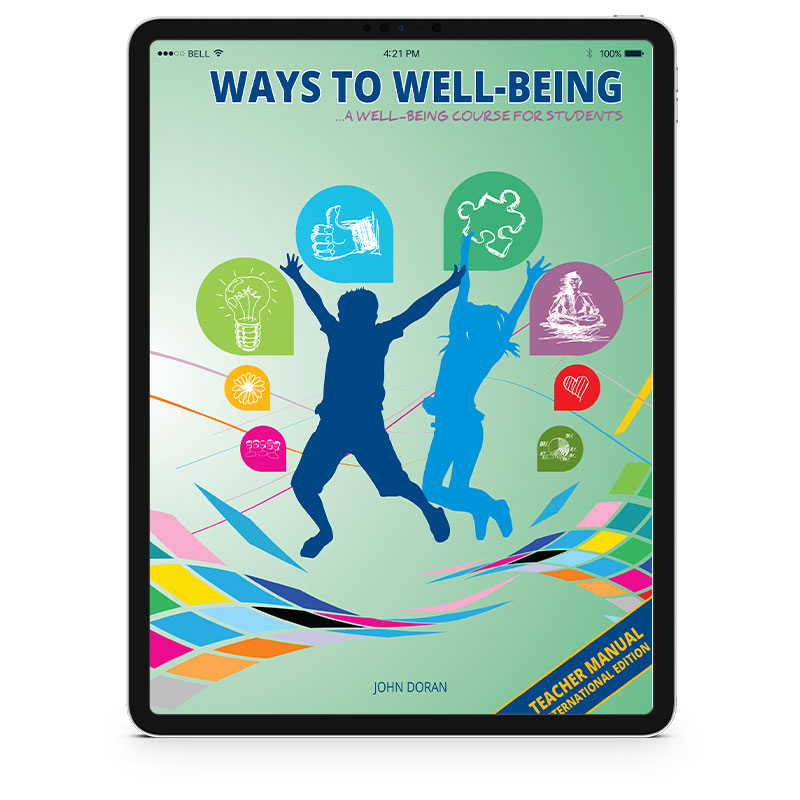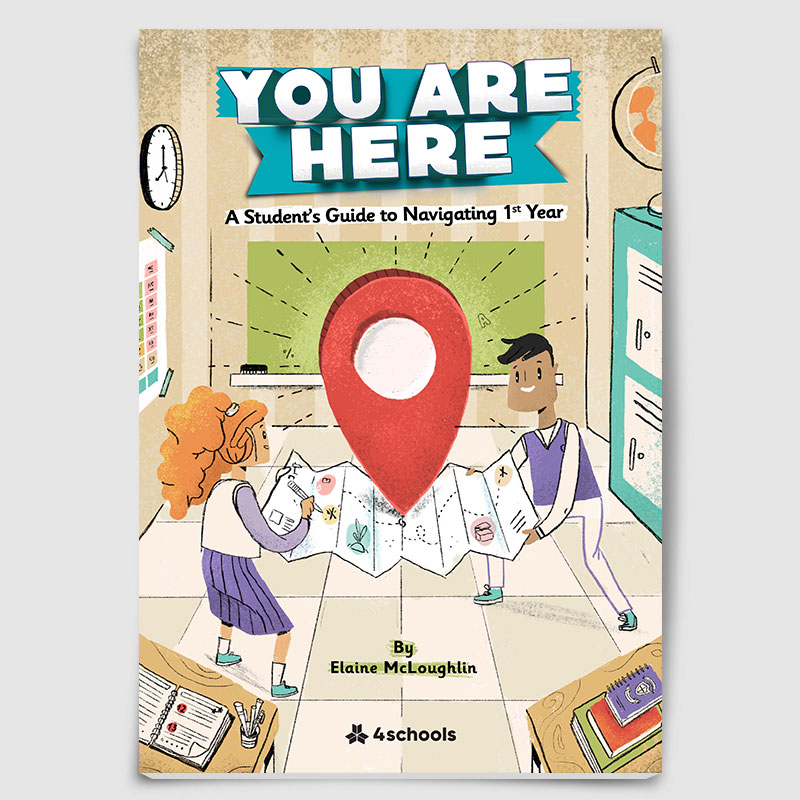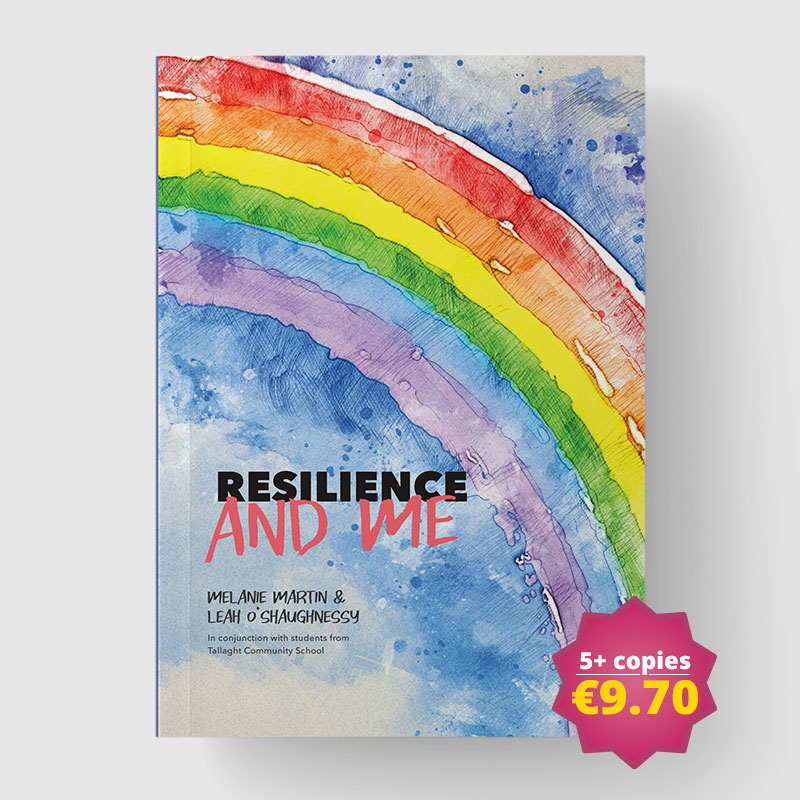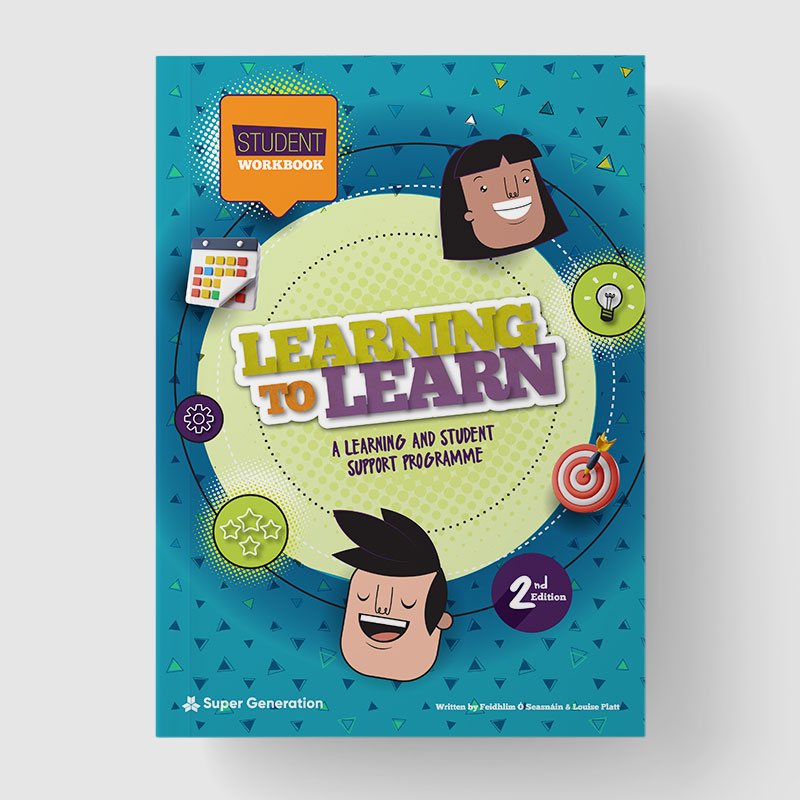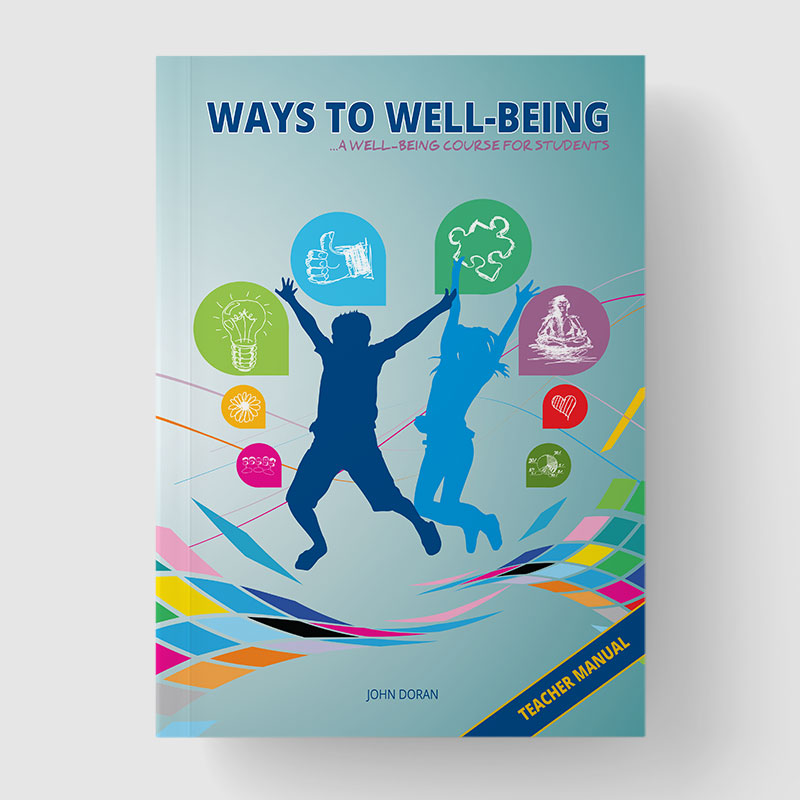
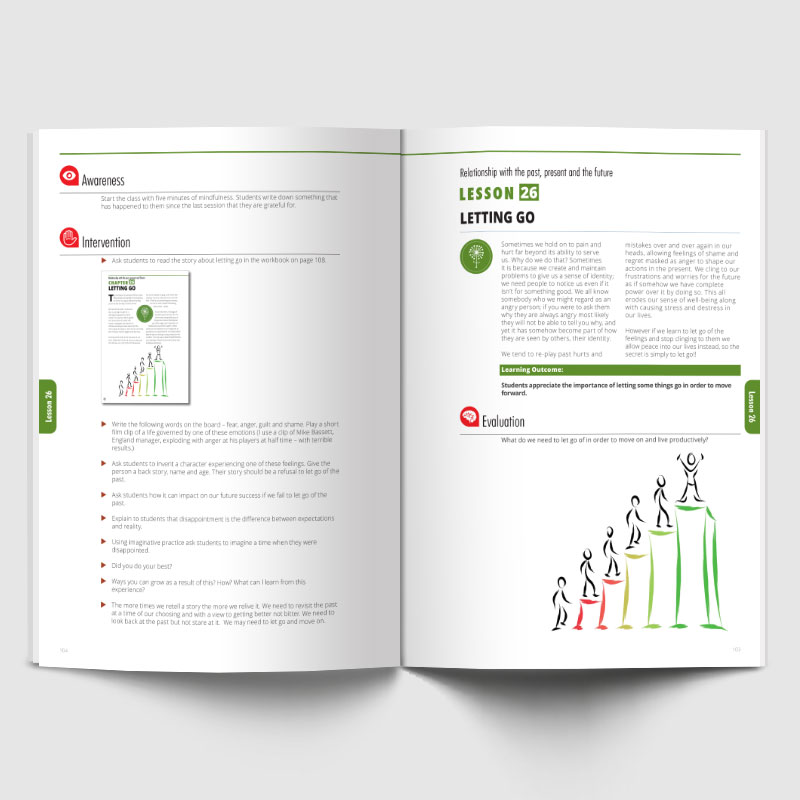
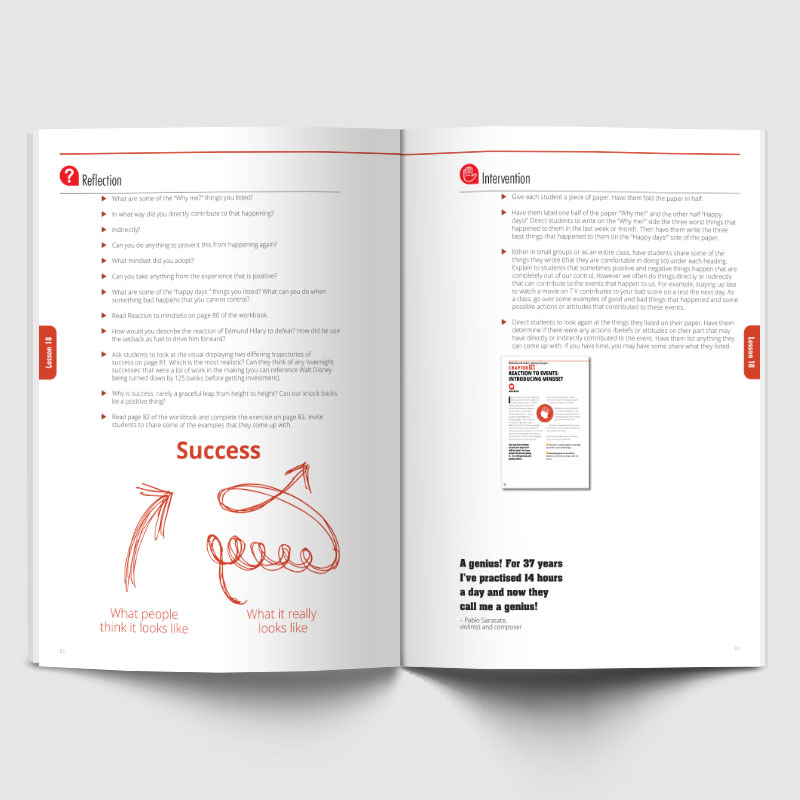
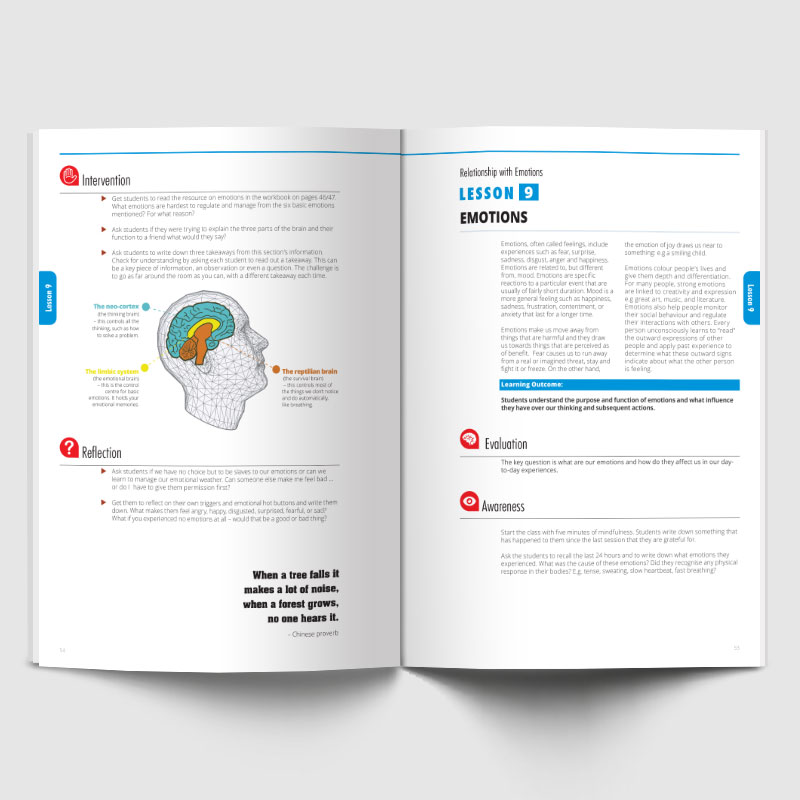
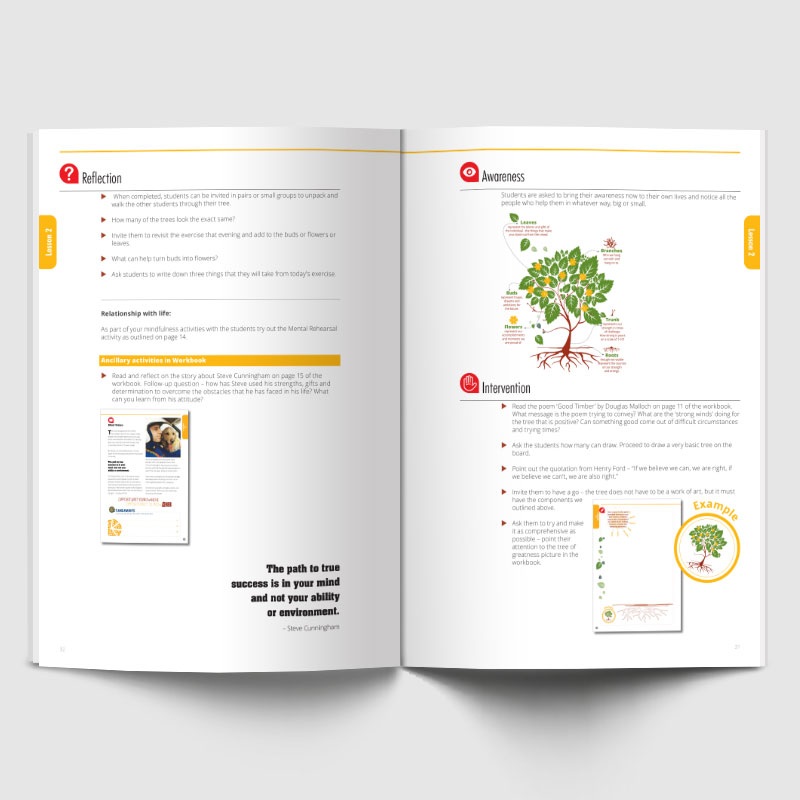
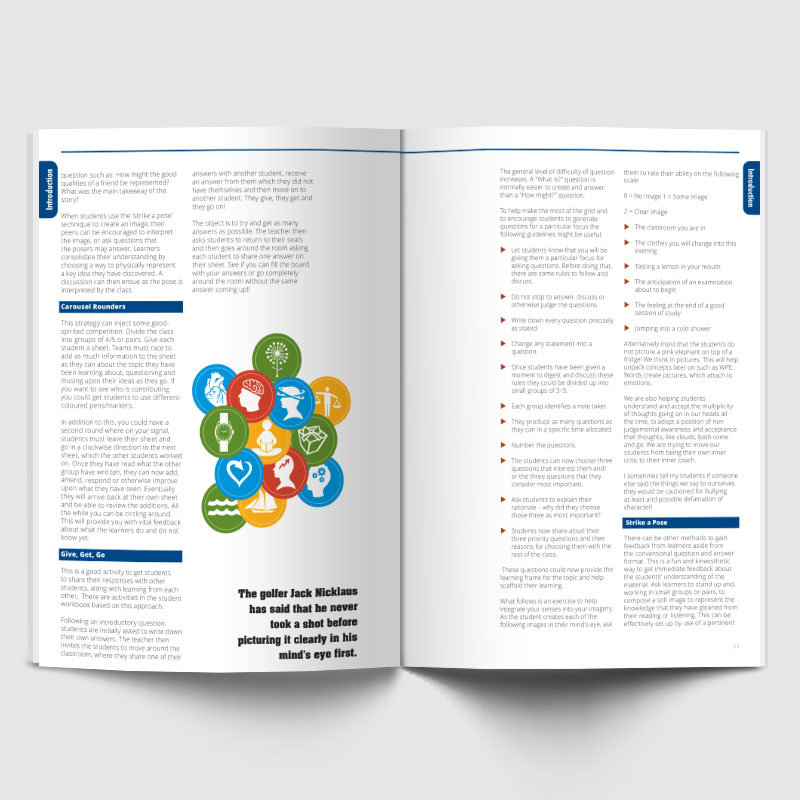
Ways to Well-Being Teacher Manual
Young people are living in a world filled with more choice and opportunity than any previous generation. However, this choice and opportunity brings challenges and from time to time unfulfilled expectations for students, which all impacts upon their sense of wellbeing.
This updated international version of the Ways to Well-Being programme is designed for senior cycle students, giving them the confidence, motivation and resilience to develop the mindset to deal with this increasingly challenging world.
The predominant theme of the programme is the fundamental relationship the young person has with life. Research has shown that the happier a student is, the more successful they will be in their studies.
Recommended guide to delivering the programme in your school
There are over 100 hours of teaching material contained in the programme and it is suitable for use with students from transition year right through to sixth year, with ample content.
The lesson plans, stories and accompanying notes are not designed to be prescriptive; rather, the workbook has been designed in such a way that a teacher may decide to follow it through or else dip in and out of it and even build upon its contents through student discussions and activities.
The workbook is intended to be a document that charts the students’ personal thoughts, opinions and beliefs at important junctions in their lives. The material is designed to be engaging, interactive, and experiential and uses examples from within the students’ framework of reference.
The teacher resource manual accompanying the Ways to Well-Being student programme contains the following elements:
o Theory and knowledge underpinning the programme
o Outline of programme structure
o Methodology for delivering the programme.
The lessons within the programme are structured around the four concepts of:
1. Evaluation
2. Awareness
3. Intervention
4. Reflection
Structuring the lessons around these for concepts ensures each lesson is seen organically, ready to be changed and moulded to take advantage of the creativity of both teacher and student.

